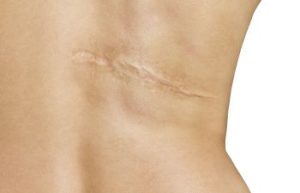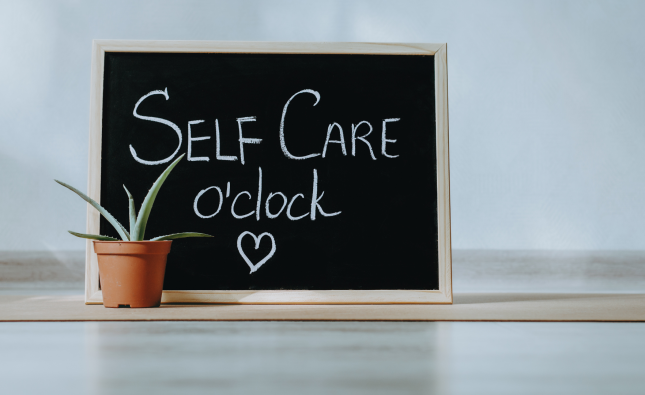
Introduction:
Meet Dr. Marion Elizabeth Fesmire, a renowned dermatologist with over two decades of experience in skincare and scar management. Dr. Fesmire has dedicated her career to helping individuals achieve flawless skin and conquer common dermatological challenges. In this article, she shares her invaluable insights on the topic of keloid scars and offers practical lifestyle solutions to help you regain your confidence and beauty.
Understanding Keloid Scars
Keloid scars, those raised and often itchy skin growths that can develop after injury or surgery, can be distressing. In this section, we delve into what keloid scars are, their characteristics, and why they occur.
Keloid scars are a specific type of scar that tends to be more prominent than other scar types. They often extend beyond the boundaries of the original injury, forming a raised, thickened area of skin. This can be not only aesthetically bothersome but also physically uncomfortable, as keloid scars are often associated with itching and tenderness.
Key Points:
- Keloid scars are characterized by their raised, thickened appearance.
- They may extend beyond the original injury site.
- Itchiness and tenderness are common symptoms.

Causes and Risk Factors
Discover the factors that increase your susceptibility to keloid scars. Dr. Fesmire explores the genetic, environmental, and lifestyle triggers that play a role in their development.
Keloid scars aren’t just a matter of chance. Several factors contribute to their formation, and understanding these can help you take proactive steps in prevention and management.
Genetics: Genetics play a significant role. If you have a family history of keloid scarring, your risk is higher. Certain genes may make some individuals more prone to keloid formation.
Injury Type: The type of injury or surgery you’ve experienced matters. Keloid scars are more common after burns, surgery, severe acne, or body piercings.
Skin Type: Your skin type can also affect your susceptibility. People with darker skin tones are more prone to keloid formation.
Age and Gender: Keloid scars tend to develop most frequently in individuals between the ages of 10 and 30. Additionally, they are more common in women.
Key Points:
- Genetic predisposition is a significant factor.
- The type of injury or surgery matters.
- Skin type, age, and gender influence susceptibility.
Dr. Fesmire’s Approach
Dr. Fesmire shares her personalized approach to keloid scar management, drawing from her extensive clinical experience. Learn about her holistic and patient-centric strategies.
Dr. Fesmire’s approach to keloid scar management is centered around a holistic view of skincare. Her patient-centric strategies prioritize not only the physical aspects of scar treatment but also the emotional well-being of her patients.
Comprehensive Assessment: Dr. Fesmire starts by thoroughly assessing the scar, considering its size, location, and the patient’s overall health.
Individualized Treatment Plans: She then creates a customized treatment plan that may include a combination of topical treatments, injections, laser therapy, or surgical removal, depending on the scar’s characteristics and the patient’s goals.
Emotional Support: Dr. Fesmire understands the emotional toll keloid scars can take on individuals. She offers psychological support and guidance throughout the treatment journey.
Follow-up and Monitoring: Regular follow-up appointments are essential to track progress and make adjustments to the treatment plan as needed.
Key Points:
- Comprehensive assessment is the starting point.
- Treatment plans are tailored to each patient.
- Emotional support is integral to the process.
- Follow-up and monitoring ensure success.
Lifestyle Habits for Scar Management
Your daily choices can greatly impact keloid scars. Explore practical lifestyle habits that can help minimize their appearance and discomfort.
Beyond medical treatments, your daily habits can significantly influence how keloid scars develop and persist. Incorporating these lifestyle changes can make a noticeable difference in your scar management journey.
Hydration: Proper hydration is essential for skin health. Drink plenty of water to keep your skin moisturized from the inside out.
Sun Protection: Sun exposure can worsen the appearance of keloid scars. Always apply sunscreen when going outdoors, and consider wearing clothing that covers the scar.
Healthy Diet: A balanced diet rich in vitamins and nutrients can promote skin healing. Include foods high in vitamin E, vitamin C, and zinc.
Avoidance of Irritants: Harsh skincare products and chemicals can aggravate keloid scars. Use gentle, hypoallergenic skincare products.
Stress Management: Stress can negatively impact skin healing. Engage in relaxation techniques such as yoga, meditation, or deep breathing exercises.
Key Points:
- Stay well-hydrated.
- Protect scars from sun exposure.
- Eat a skin-friendly diet.
- Use gentle skincare products.
- Manage stress effectively.
Treatment Options
From topical creams to advanced medical procedures, this section outlines the array of treatment options available for keloid scars, allowing you to make informed decisions.
When it comes to treating keloid scars, a variety of options are available, each with its own benefits and considerations. Dr. Fesmire discusses these treatments, helping you understand which may be the most suitable for your situation.
Topical Creams: Non-invasive and easy to apply, topical creams can help reduce itching and redness associated with keloid scars.
Steroid Injections: Injected directly into the scar, steroids can reduce inflammation and flatten the scar’s appearance. This treatment is particularly effective for moderate keloids.
Laser Therapy: Laser treatments offer precision in targeting keloid tissue, promoting collagen production and flattening the scar.
Surgical Removal: For large or stubborn keloid scars, surgical removal may be an option. This procedure provides permanent removal but carries some risks.
Key Points:
- Topical creams offer non-invasive relief.
- Steroid injections are effective for moderate keloids.
- Laser therapy promotes collagen production.
- Surgical removal is an option for large scars.
Prevention and Self-Care
Preventing keloid scars is as crucial as treating them. Dr. Fesmire provides actionable tips on self-care and prevention methods.
Prevention is key when it comes to keloid scars. While you may not be able to control all risk factors, you can take proactive steps to minimize your chances of developing them.
Early Wound Care: Properly care for wounds to minimize the risk of keloid formation. Keep wounds clean and follow your healthcare provider’s instructions for wound care.
Compression Therapy: In some cases, wearing pressure garments over the wound site can help reduce keloid formation.
Silicone Gel Sheets: Silicone gel sheets have been shown to improve the appearance of keloid scars. They’re available over the counter and can be used as directed.
Avoidance of Body Piercings: If you’re prone to keloid scars, consider avoiding body piercings and tattoos, as these can lead to keloid formation.
Consultation with a Dermatologist: If you have a family history of keloid scarring or other risk factors, consult with a dermatologist for early intervention and guidance.
Key Points:
- Proper wound care is essential.
- Compression therapy and silicone gel sheets can help.
- Avoiding body piercings may be advisable.
- Early consultation with a dermatologist is wise.
Real-Life Success Stories
Read inspiring stories of individuals who have successfully managed their keloid scars, thanks to Dr. Fesmire’s guidance and expertise.
Success stories can be incredibly motivating and reassuring, especially when dealing with a challenging condition like keloid scars. Here are a few real-life accounts of individuals who have overcome keloid scars with the help of Dr. Fesmire’s expertise.
Sarah’s Story: Sarah, a 25-year-old woman, had struggled with a prominent keloid scar on her shoulder for years. With Dr. Fesmire’s guidance and a combination of steroid injections and laser therapy, Sarah’s scar gradually flattened and became less noticeable. Today, she confidently wears sleeveless tops without feeling self-conscious.
David’s Journey: David, a 35-year-old man, had a keloid scar on his chest after a surgical procedure. Dr. Fesmire performed surgical removal, and David was thrilled with the results. He now enjoys his time at the beach without feeling uncomfortable.
Emma’s Triumph: Emma, a teenager, developed keloid scars after a severe case of acne. With Dr. Fesmire’s support, she learned to manage her scars with topical treatments and self-care practices. Emma’s self-esteem soared as her scars faded, and she could proudly show her face.
Expert Q&A with Dr. Fesmire
In this engaging Q&A session, Dr. Fesmire addresses common questions and concerns related to keloid scars, offering practical advice for those seeking solutions.
Q: Are keloid scars preventable, and if so, how?
Dr. Fesmire: While you can’t always prevent keloid scars, early wound care, avoiding unnecessary body piercings, and consulting with a dermatologist if you have risk factors can help minimize your chances.
Q: Can keloid scars be completely removed?
Dr. Fesmire: Keloid scars can be significantly improved, but complete removal may not always be possible. The goal is to make them less prominent and comfortable.
Q: Are there any home remedies for keloid scars?
Dr. Fesmire: While there are no miracle home remedies, silicone gel sheets and proper wound care can be beneficial. However, always consult with a healthcare provider for guidance.
Conclusion
Mastering keloid scars is achievable with the guidance of an expert like Dr. Marion Elizabeth Fesmire. Armed with her insights, lifestyle tips, and treatment options, you can embark on a journey towards flawless skin and renewed confidence. Don’t let keloid scars define you; take control of your skin health today. Remember, with the right approach and determination, you can conquer keloid scars and reveal your true beauty.










